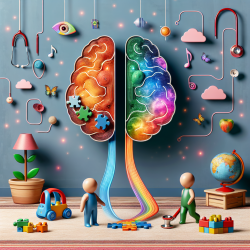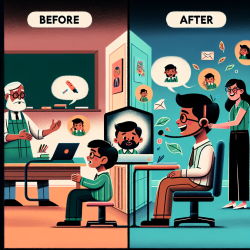Understanding Functional Lateralization: A New Frontier in Therapy
In the ever-evolving field of speech-language pathology, understanding the intricate workings of the brain is crucial. Recent research, as presented in the article The architecture of functional lateralisation and its relationship to callosal connectivity in the human brain, sheds light on the complexities of functional lateralization and its implications for therapy.
The Science Behind Functional Lateralization
Functional lateralization refers to the tendency for some neural functions or cognitive processes to be more dominant in one hemisphere of the brain than the other. This research provides the first comprehensive map of these asymmetries, identifying four key functional axes: symbolic communication, perception/action, emotion, and decision-making. Such insights are pivotal for practitioners aiming to tailor therapeutic approaches based on individual brain function profiles.
Implications for Speech-Language Pathology
For speech-language pathologists, understanding these functional axes can significantly enhance therapeutic outcomes. Here's how:
- Symbolic Communication: Recognizing the left hemisphere's dominance in language can guide targeted interventions for children with language delays, focusing on strengthening neural pathways associated with language processing.
- Perception/Action: Insights into motor planning and execution can aid in developing therapies for children with apraxia, ensuring a more holistic approach that considers both hemispheres.
- Emotion: Understanding emotional processing asymmetries can help in creating interventions for children with emotional regulation difficulties, leveraging the right hemisphere's role in emotional processing.
- Decision-Making: Tailoring interventions to enhance decision-making skills can benefit from understanding the right hemisphere's involvement, especially in children with executive function challenges.
Callosal Connectivity: Bridging the Hemispheres
The study also highlights the relationship between functional lateralization and callosal connectivity. It suggests that regions with significant lateralization have reduced connections with the opposite hemisphere, a finding that has profound implications for therapy. This reduced connectivity might be a result of evolutionary adaptations to minimize conduction delays, but it also points to potential areas for therapeutic intervention.
Practical Applications and Future Research
Practitioners can utilize these findings by incorporating brain-based strategies into their therapeutic practices. For instance, interventions could focus on enhancing inter-hemispheric communication through targeted exercises that promote neural plasticity. Additionally, understanding these brain dynamics encourages further research into how these functional axes and connectivity patterns can be leveraged to improve recovery outcomes in children with neurological impairments.
Conclusion
The insights gained from this research are invaluable for advancing therapeutic practices. By understanding the architecture of functional lateralization and its connectivity, practitioners can develop more effective, personalized interventions that cater to the unique brain profiles of each child.
To delve deeper into the research, read the original paper: The architecture of functional lateralisation and its relationship to callosal connectivity in the human brain.










